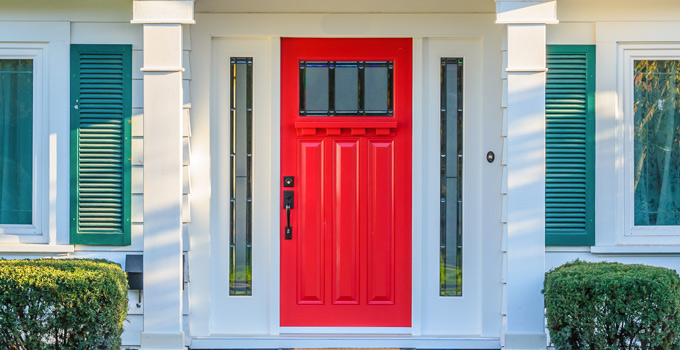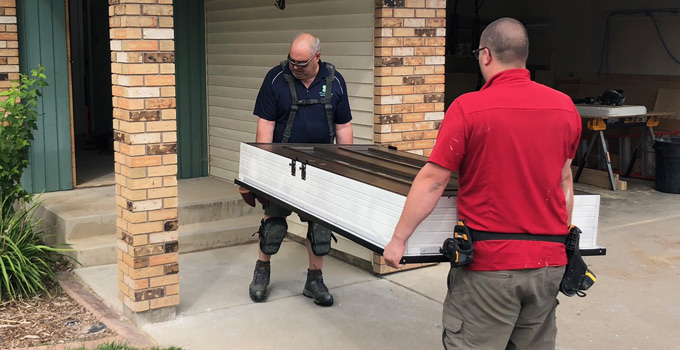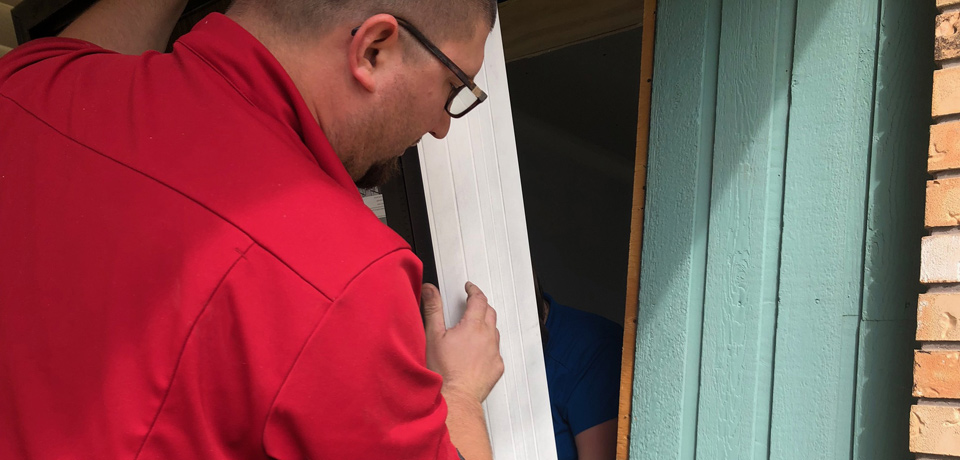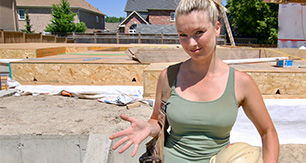Upgrading an entryway door is an easy way to add value to a home. Installing exterior doors is a difficult job that needs to be done right.
When changing a door, homeowners and contractors need to consider how materials, like glass, can affect natural light and temperature in a home.
We spoke to David Rae from Madero Doors to learn the best practices for high-quality door installations and how contractors can be sure to do it right the first time.

Door selection
When choosing a door for your client’s home, it is extremely important to ensure the new door fits in the existing opening. The contractor should make sure that all measurements are accurate, and that the new door system will allow for correct shimming on-site.
Rae also recommends deciding on all components for the new door before beginning installation. Do clients want to paint or stain the door? Do they want a steel or fibreglass door? Components used can directly affect the cost and performance of exterior doors, so it is important that all information is communicated effectively from the start.
Contractors will also need to confirm how the door will be finished. Will it be done at the factory or after the door is installed? Most manufacturers’ warranties will speak to finishing a door properly. It is important that the client decides on finishing before installation to ensure a smooth and simple process.

Installation dos and don’ts
Well-installed doors will have a longer life, which means less maintenance and fewer headaches for your client. Failing to prepare the door and space properly for installation can result in problems down the road. Be sure to silicone under the threshold to seal out moisture, and take the time to square, plumb and level the door with shims.
When beginning the installation, it’s important to follow a detailed procedure. Make sure you have a flat, level surface. No matter what, don’t shim your sill.
To prevent any moisture penetration under your sill, ensure you use good-quality caulking along the subfloor. Install flashing above the door-frame header so that no moisture can leak in from above the door frame. Make sure that your door frame is centred in the rough opening, and shim on both sides evenly. Ensure a consistent gap around the door and inside the frame.
Never attach the door frame to the studs by screwing through decorative brickmould trim. Only screw the frame to the stud through the door frame, behind the weather-stripping.
Another thing to keep in mind when it comes to installing a new exterior door is never to screw through door shims. Always screw below the shim to prevent leakage and ensure durability.

Finishing touches
If your client would like the new door painted or stained, it’s best to remove it from the hinges and set it on a flat surface prior to applying the finish. This will prevent any drips and ensure a top-quality finish. Again, it is important to discuss any finishing or painting with your client before starting the installation. Painting a door on its frame is not recommended.
For more information on exterior doors and installation, talk to the experts at your local Co-op Home Centre.








